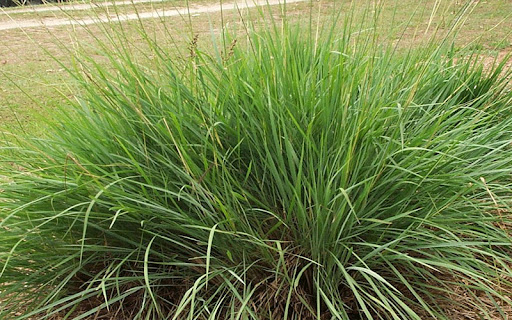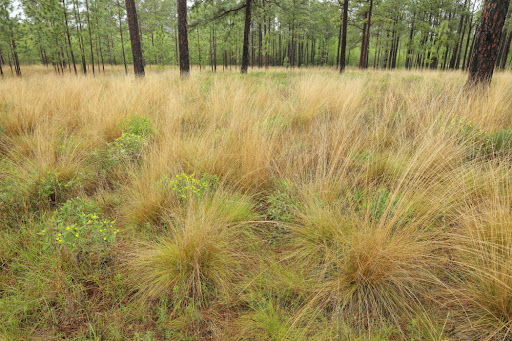
Pink Muhly Grass- (Muhlenbergia capillaris) Muhly grass grows about 2-3 feet tall and 3 feet wide. It is a versatile bunch grass that is drought and salt-tolerant growing in full sun to part shade. It sprouts a beautiful purple flower during the fall and winter when most other flowering plants are dormant. It is stunning when used in mass plantings and works well in a wildflower garden. Muhly grass serves as a refuge and shelter for some small animals and the seeds provide a tasty snack for smaller birds. It can be trimmed back after flowering and before spring flush.

Dwarf Fakahatchee grass- (Tripsacum floridanum) or Florida Gamagrass, is a medium-sized accent grass that ordinarily grows to about 2-3 feet tall and 3 feet wide. It grows best in moist areas with full sun or light shade but will tolerate dry conditions. It has moderate salt tolerance. It works great as a background for flower gardens and is a host plant for clouded skipper and three-spotted skipper butterflies while providing seeds and insects for small birds. A larger variety (Tripacum dactyloides) can be found which routinely grows up to 5 feet tall, be sure to know which species you are planting.

Coastal love grass- (Eragrostis elliotii) Also known as Elliot’s Lovegrass, coastal lovegrass grows to about 1-3ft tall and 1-2ft wide. It grows best in full sun in either loam or sand and is salt tolerant. It has a beautiful silver blue color with delicate white seeds in the fall. Small birds and wildlife enjoy its seeds. It works best in wildflower gardens and in tight spaces. A purple variety of love grass (Eragrostis spectabilis) is also available.

Sand Cordgrass- (Spartina Bakeri) is a native grass species that plays a vital role in stabilizing coastal ecosystems and providing habitat for various forms of marine life. It typically grows to a height of 2 to 3 feet (0.6 to 0.9 meters) and forms dense clumps of grass in intertidal zones and marshes along the coast. Sand Cordgrass thrives in saltwater and brackish environments and is well-suited for USDA hardiness zones 8 to 11, commonly found in coastal regions.
Thriving in full sun to partial shade, Sand Cordgrass is specially adapted to the harsh conditions of coastal areas, including exposure to saltwater, shifting sands, and periodic flooding from tides. Its deep roots help stabilize sandy soils, preventing erosion and creating a foundation for other plant species to establish. The grass features tall, slender stems and narrow leaves that create a visually appealing texture. Sand Cordgrass is also ecologically significant as it provides habitat for many marine and estuarine organisms, serving as a nursery and feeding ground for various fish, crabs, and invertebrates. Its growth and density help to trap sediments and filter water, improving water quality and contributing to the overall health of coastal ecosystems. When planting Sand Cordgrass, it’s important to space individual plants about 1 to 2 feet apart to allow for proper growth and the development of its characteristic clumping habit.

Saltmeadow cordgrass- (Spartina patens) is a long-lived perennial grass growing 1-3 feet tall and found along the entire east coast of the U.S. It is extremely salt and relatively drought-tolerant. It will tolerate periods of prolonged coastal flooding. It grows along beaches and marshes forming dense colonies or meadows. It spreads vigorously from rhizomes and grows in tight clusters. It is commonly used as a stabilizer for the shorelines and has considerable resistance to hurricane winds. Its short stature makes it an ideal plant for buffering shorelines as it provides stabilization without eliminating the view of the water. Will grow taller in fresh-water environments. Birds and other small animals eat the seeds.

Wiregrass- (Aristida stricta) Wiregrass’s 1-2ft frame is great groundcover for those seeking a naturalistic landscape or a base plant for a wildflower garden. It grows best with sandy soil and full sun while attracting important pollinators and birds. It is an important groundcover species in long-leaf pine and other fire-dependent ecosystems. In order for it to successfully flower and produce seeds it must be burned in the early season. Homeowners can stimulate growth by trimming it to the ground before spring.
